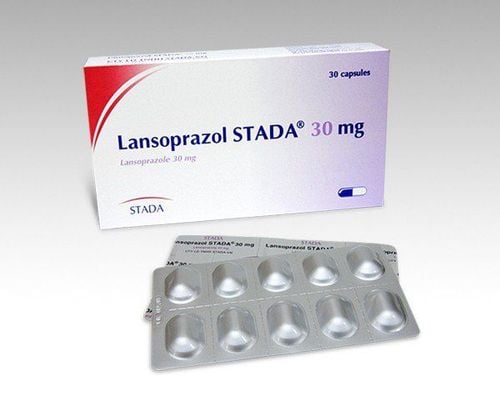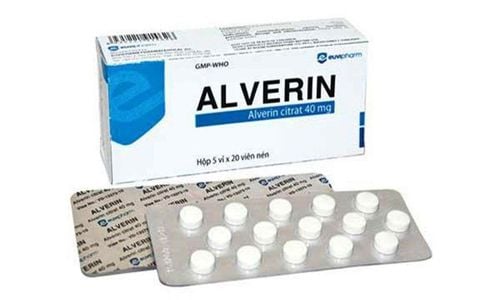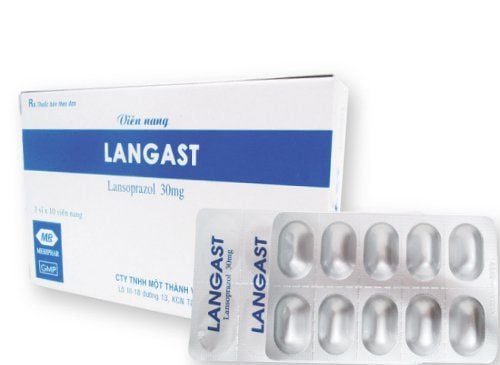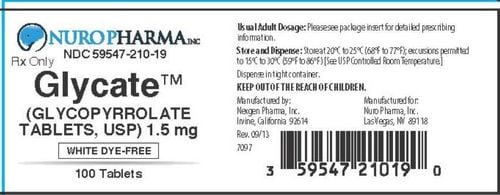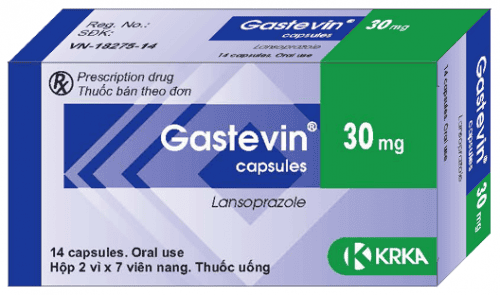This is an automatically translated article.
Lantazolin medicine has the main active ingredient is Lansoprazole with a concentration of 30mg and other excipients in a sufficient amount. This drug is in the form of capsules, suitable for direct oral use. Packing is a box of 3 blisters and each blister contains 10 capsules.
1. What is Lantazolin?
What is Lantazolin? Lantazolin drug has the main active ingredient is Lansoprazole 30mg and other excipients in sufficient quantity. This drug is in the form of capsules, suitable for direct oral use. Packing is a box of 3 blisters and each blister contains 10 capsules.
1.1. Pharmacodynamics of the active ingredient Lansoprazole Main active ingredient Lansoprazole is a benzimidazole derivative with anti-secretory effect on gastric acid. The mechanism of action of the drug Lansoprazole is to inhibit the proton pump of the gastric mucosa, so this drug is used to treat peptic ulcers and long-term treatment of hypersecretory conditions. pathological digestive tract. The main active ingredient Lansoprazole has the effect of inhibiting gastric acid secretion mainly and when stimulated by any stimulant. The degree of inhibition of gastric acid secretion depends on the dose and duration of treatment. However, the active ingredient Lansoprazole inhibits acid secretion better than H2-receptor antagonists. Lansoprazole is also used to treat gastritis caused by Helicobacter pylori infection when combined with one or more anti-infective drugs. If combined with one or more anti-infective drugs, specifically Amoxicillin, Clarithromycin, Lansoprazole-containing drugs can be effective in eradicating stomach infections caused by H.pylori. 1.2. Pharmacokinetics of the active ingredient Lansoprazole Active ingredient Lansoprazole is rapidly absorbed from the gastrointestinal tract, bioavailability is about 80%. Taking Lansoprazole after a meal reduces the concentration of the drug in the blood by 50%. Active ingredient Lansoprazole is about 97% bound to plasma proteins. Peak plasma concentrations are reached approximately 1.7 hours after oral administration. Lansoprazole is extensively metabolised in the liver to two major metabolites, the sulfone of lansoprazole and the hydroxy lansoprazole. These two metabolites have little or no anti-acid effect. About 20% of the active substance Lansoprazole is excreted in bile and urine. The mean elimination half-life in healthy subjects is approximately 1.5 hours, and the elimination of lansoprazole is prolonged in subjects with severe liver disease but is unchanged in those with severe renal impairment.
2. What disease does Lantazolin treat?
Lantazolin drug is used in the treatment of diseases, specifically as follows:
Treatment of acute phase and maintenance treatment of gastroesophageal reflux. Treatment of acute gastric and duodenal ulcers. Treatment of Zollinger-Ellison syndrome, systemic mastocytosis, multiple endocrine neoplasia.
3. Usage and dosage of the drug Lantazolin
3.1. How to use Lantazolin Lantazolin drug is made in the form of capsules, suitable for direct oral use.
3.2. Dosage of the drug Lantazolin Dosage for adults:
Treatment of gastric and duodenal ulcers: take 1 tablet per day, used for 4 to 8 weeks, you should take the drug in the morning before meals. Combination therapy with antibiotics Amoxicillin and Clarithromycin in the treatment of Helicobacter pylori infection for people with active duodenal ulcer is as follows: Triple drug combination including 30mg Lansoprazole and 1g Amoxicillin and 500mg Clarithromycin, administered twice per day, for a period of 10 to 14 days. Combination of 2 drugs including 30mg Lansoprazole + 1g Amoxicillin, used 3 times daily, for 14 days. Treatment of reflux esophagitis take 1 tablet a day, used for a period of 4 to 8 weeks and can be used for another 8 weeks if not cured. Treatment of Zollinger-Ellison syndrome use as directed by the treating physician. 3.3. Overdose cases and overdose management Symptoms of Lantazolin overdose may include hypothermia, sedation, convulsions, decreased respiratory rate. In case of overdose, the treating doctor will prescribe symptomatic and supportive treatment. Dialysis does not remove the drug from the body.
4. Unwanted effects of the drug Lantazolin
During the use of Lantazolin, users of the drug may experience some unwanted reactions to the body, including:
Hypersensitivity reactions: Rash and itching may occasionally appear. In this case, the drug containing the active ingredient Lansoprazole should be discontinued. Liver: Caused by an infrequent increase in SGOT, SGPT, Phosphatase-Alkaline, LDH or G-GTP, it should be closely monitored. If abnormalities appear, Lantazolin should be discontinued. Blood: Anemia, decreased white blood cell count, or increased eosinophil count may occur infrequently, decreased platelet count rarely occurs. Digestive system: Occasionally, patients may experience digestive upset, constipation, diarrhea, dry mouth or abdominal distension. Nervous system: Headache, somnolence may occur infrequently or insomnia and dizziness rarely. Other undesirable effects such as fever or elevation of total cholesterol and uric acid have occasionally occurred.
5. Lantazolin drug interactions
Lantazolin should not be used together with drugs that are metabolised by cytochrome P450. Lantazolin reduces the effect of Ketoconazole and other drugs whose absorption requires an acidic environment. Sucralfate slows and reduces the absorption of the active ingredient Lansoprazole.
6. Some notes when using the drug Lantazolin
6.1. Contraindications of the drug Lantazolin People with sensitive or hypersensitivity to the main active ingredient Lansoprazole or other ingredients of the drug.
6.2. Caution when using Lantazolin It is necessary to reduce the therapeutic dose for patients with liver disease. Effects of the drug on the ability to drive and use machines: Undesirable effects that may occur when using Lantazolin medicine such as dizziness, dizziness, vision loss and somnolence may occur, which may impair the ability to use Lantazolin. reactivity. Therefore, when you drive or operate machinery, you should be cautious when using this medicine. Pregnancy: There are no reports of the use of Lantazolin in pregnancy. It is not known whether the drug crosses the placenta into the fetus. However, in the case of long-term use of Lantazolin and at high doses, it caused cancer in both male and female mice and rats. Therefore, it should not be used by pregnant women. Lactation: Both Lansoprazole and its metabolites are excreted in the milk of rats and may be excreted in human milk. Because of the proven carcinogenic effect of the drug in animals, its use should be avoided in nursing mothers. Store Lantazolin in a dry place, away from direct light. In addition, it is necessary to keep Lantazolin out of the reach of children and family pets. Never use Lantazolin after its expiry date.
Lantazolin medicine has the main active ingredient is Lansoprazole with a concentration of 30mg and other excipients in a sufficient amount. This medicine is prescribed by doctors to treat diseases of the digestive tract. Patients should carefully read the instructions for use, consult a doctor / pharmacist before using the drug. Absolutely do not arbitrarily buy Lantazolin to treat the disease at home, because there may be unwanted side effects to health.
Follow Vinmec International General Hospital website to get more health, nutrition and beauty information to protect the health of yourself and your loved ones in your family.




